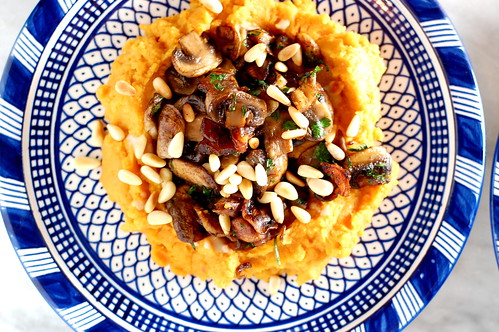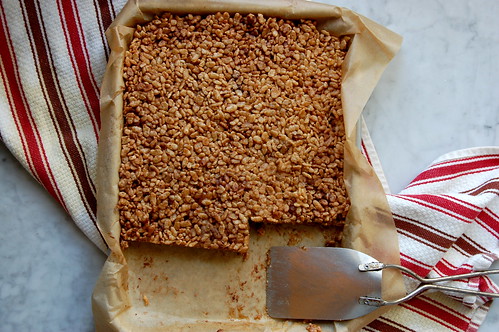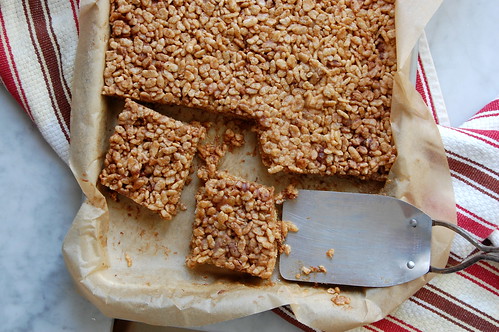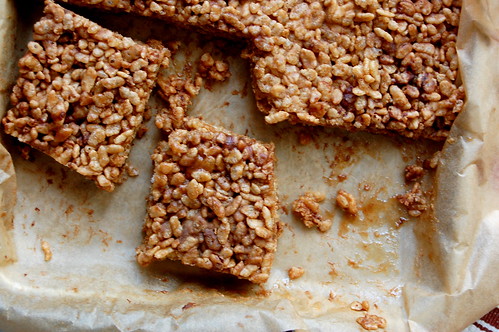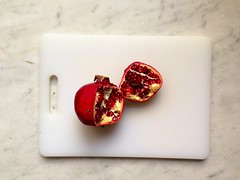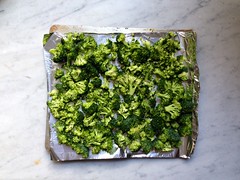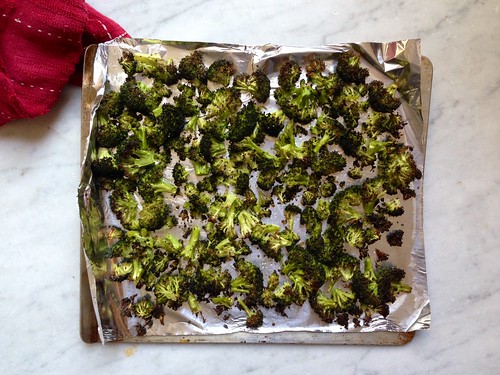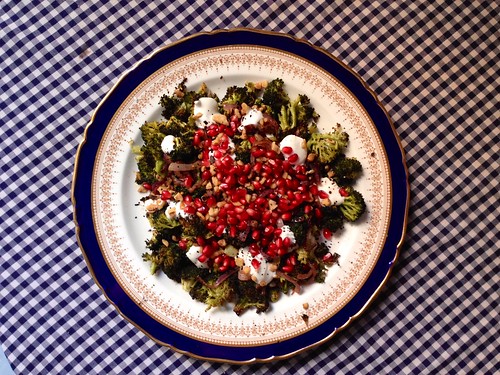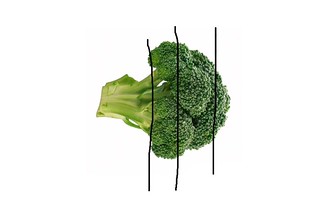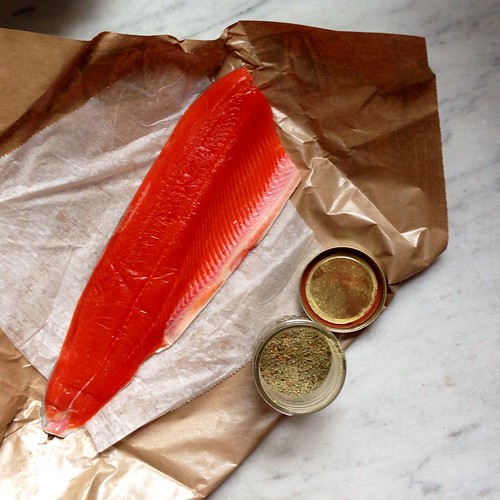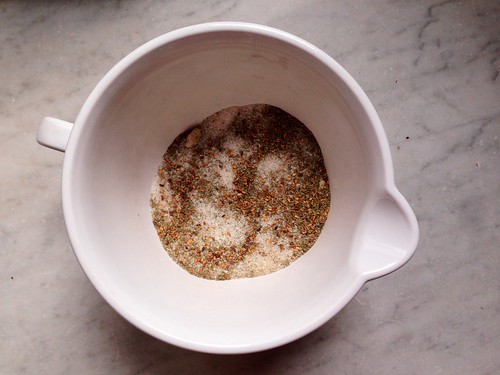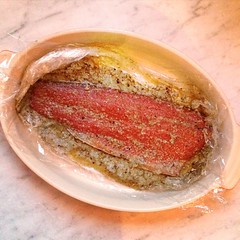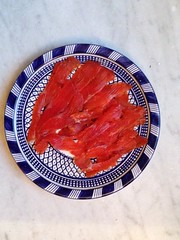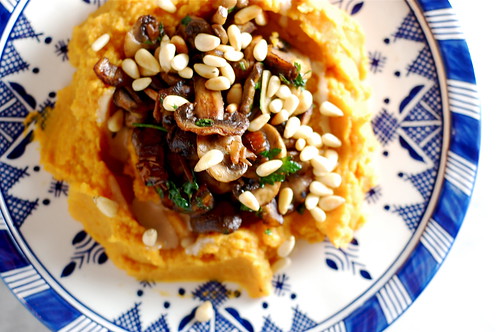
If you are like me, you make dinner most nights. Some nights it's good, some nights you are lucky to hit the mediocre mark and comfort yourself with the thought that at least dinner was homemade and relatively healthy. Other nights dinner might be very simple but very good -- recently we made a pureed soup with leeks, butternut squash, celeriac, broth, cream, and apple cider, which definitely fell into this category.
And then, every once in a while, you make something and go WOAH, let's definitely make that again! Which was the case, for me at least, with this version of pumpkin hummus. First of all, we talked about pumpkin dip , or mouttabal bi yaqteen (متبل يقطين) many moons ago on this blog, and it continues to be a favorite of mine. Syrians love pumpkin and tahini together, whether in a dip, in a stew, or in a salad, though admittedly the latter is not traditional. The traditional dip does not involve chickpeas, but at some point I seem to have forgotten this and instead of making mouttabal bi yaqteen I started making hummus bi yakteen and I never looked back.
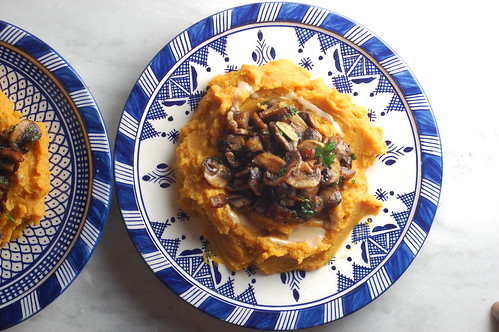
If you are currently in the midst of lovely North American fall, full of crisp leaves and pretty squashes, then you know that pumpkin hummus is a phenomenal idea. It is also a delicious idea. For dinner, I wanted something heartier, so I topped it with a topping of sauteed mushrooms, dates, and pine nuts. The topping adds just the right amount of meaty-ness, with sweet and spicy notes. The following day we ate the pumpkin hummus topped with a topping of ground beef, jalepenos, and tomatoes, which was also great.
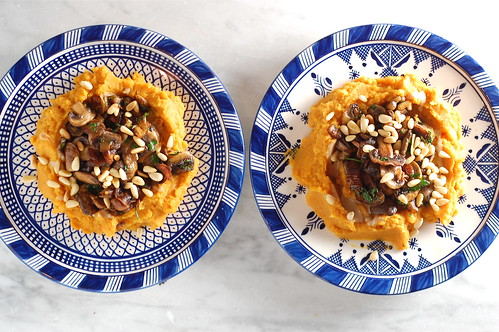
Pumpkin Hummus with Mushroom, Date, and Chile Topping
This would be a great dish for a vegetarian dinner party or as an offering for a vegetarian at Thanksgiving.
1 recipe pumpkin hummus, follows
topping:
1 box (8 oz) button mushrooms, sliced
5 large medjool dates, pitted and cut into small cubes
1 clove garlic, minced
1 handful flat leaf parsley leaves, sliced
salt, olive oil
for serving:
chile flakes (Aleppo pepper, Urfa biber, or your preferred mild red pepper flakes)
extra tahini
1/4 cup pine nuts
1. Prepare hummus, scoop into serving bowl. Set aside.
2. Heat a generous splashing of olive oil in a medium sized heavy bottomed pot. Add the mushrooms to the pot and sprinkle with salt. Allow the mushrooms to saute, stirring occasionally, until the mushrooms have expelled their juices and deep brown and soft. Add the dates and garlic, stir, and let cook for another 3-5 minutes, stirring periodically, until the garlic is cooked through and the dates are soft and there are charred spots on the mushrooms. Season again with salt. Stir in the parsley, remove the pot from the heat, and set aside.
3. Drizzle extra tahini and chile flakes over the hummus. Pile the warm mushroom over top and sprinkle with more chile flakes if desired.
4. Wipe out the pot, toast the pine nuts in the pan over high heat, being careful they don't burn. Pour pine nuts over the dish and serve.
Pumpkin Hummus
1 mediumish butternut squash, about 1 1/2 lbs
2 cups cooked chickpeas, plus a little of their cooking liquid or water
juice from half a lemon
1 teaspoon salt
1/4 teaspoon each cinnamon, allspice
1/2 cup tahini
1. Preheat oven to 425F. Cut the squash in half lengthwise, scoop out the seeds, and place on a baking sheet. (I don't bother rubbing the squash with olive oil, but feel free to if this suits you.) Place the squash in the oven and roast for 45 minutes, or until browned on the outside and completely tender when pierced with a knife. Set aside.
2. Scoop the squash flesh into the bowl of a food processor. Add all remaining ingredients. If it is very thick add a bit of the liquid or water, no more than 3-4 tablespoons though. Blend the mixture thoroughly in the food processor, letting it run for several minutes to mix thoroughly. Taste for seasoning and set aside.
